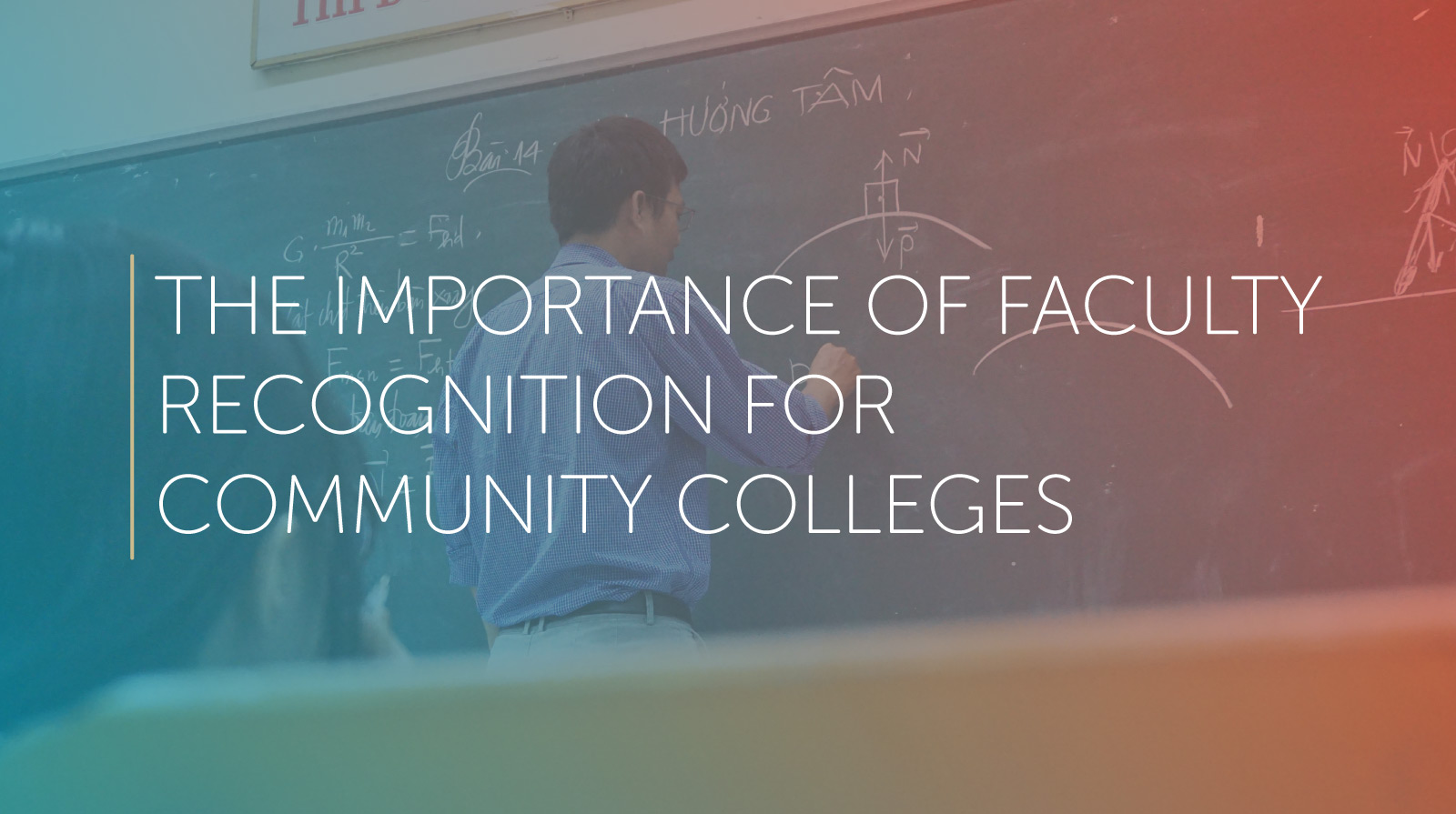Why community colleges should care about increasing faculty recognition
It’s well-known in higher education that retaining quality faculty improves learning outcomes. However, as in any workforce, it can be challenging for community colleges to retain professors long-term. Workplace dissatisfaction is certainly part of the problem. A recent study showed that faculty in a limited sample of post-secondary institutions often felt underappreciated and unrecognized, which may have a detrimental effect on their work (Sahl, 2017).
Worse, this sense of disaffection was statistically higher among racial and gender minorities (Sahl, 2017). Minority faculty serve as important role models and mentors for minority students by simply doing their jobs (Turner and Myers, 2000). Yet, full-time faculty in higher education are still 79% white (NCES 2013). Many schools have begun to focus on recruiting a more diverse faculty for this reason. These initiatives are especially important at community colleges, which serve a high percentage of first-generation and minority students
Therefore, it is troubling that women, Asian and black faculty members are less likely to feel socially accepted in the academic workplace, and also to perceive less appreciation and recognition for their work (Sahl, 2017). Although no recent systematic study has been done, based on all the existing data a lack of perceived appreciation appears to have a negative impact on retention rates and productivity.
What can community colleges do about the perceived lack of appreciation?
Based on the date above, it’s clear that increasing faculty’s sense of recognition will have cascading benefits for the school overall. It can enhance learning outcomes, foster diversity, and create a stronger academic community. This in turn can lead to increased enrollment and better completion and student retention rates. Yet, given the complicated systemic issues of racial and gender inequality, it may seem impossible to take concrete steps.
Despite the scope of the problem, we believe that community colleges can make a difference in this area by combining a commitment to educational excellence with sound marketing principles. Fundamentally, faculty will not feel recognized for their efforts unless colleges show a real commitment to faculty satisfaction and effective pedagogy. However, done with integrity effective content marketing can change people’s perception of the academic climate.
Teaching awards: Are you fostering every kind of excellence?
When we talk about faculty recognition, most people immediately think of teaching awards. Many schools offer some form of teaching award annually, which encourages pedagogical excellence. These awards are a clear way to publicly honor the efforts of deserving faculty. However, ensuring that everyone is appropriately recognized for their contribution requires a positive effort on the part of the school.
If the nominations come from department heads, deans, or award committees then the nominating parties should guard against the toxic effects of implicit bias. It is well documented that implicit bias negatively impacts women’s pay, advancement, and recognition within academia. This creates the “leaky-pipeline” – women leaving academia in far greater numbers than their male peers. Implicit bias impacts other minority groups as well. Department heads should be proactive in countering bias and alert to potential discrimination.
rketing strategy offers many opportunities to do just this, like social media spotlight features, articles in your print publications or digital newsletter, or featured faculty profiles on your website.
This kind of content will also make your school more attractive to prospeIn addition, the college determines what kind of teaching it chooses to reward. This in turn sends a clear message to faculty and administration about who the school values. Community colleges should of course function as a meritocracy. This means rewarding professors who do ground-breaking, original research. Still, granting awards for teaching innovation, or collaborative practice, or inclusive excellence, demonstrates that the school values many sorts of faculty contributions and is committed to a diverse academic community.
How to increase faculty recognition through strong marketing
Even done well, teaching awards come only once per annum and by design single out only a few members of your faculty. Meanwhile, community colleges should be fostering an academic community that attracts a diverse group of potential students. One of the best ways to do this is to invest in your faculty, especially in recruiting and retaining excellent teachers who will be models and mentors for undergraduates.
Consistently recognizing people’s efforts and achievements is a great way to make your campus appealing to prospective faculty and to increase job satisfaction among existing faculty. An intelligent mactive students. It shows that you have an academic roster that can compete with big public schools, but that you can still offer smaller class sizes and competitive tuition rates. By focusing on faculty achievement, you combat the enduring false stereotypes about community colleges being academically lightweight.
Content marketing is an important piece of faculty recognition
In conclusion, teaching awards are a good way to recognize faculty achievements, but community colleges need to do more to make faculty feel appreciated. The best way to consistently recognize and appreciate faculty contributions is to highlight their achievements through content marketing. Using your digital and CareerFocus magazine print outlets to do this effectively is an important part of a successful marketing strategy for any community college.
NCES. 2013. “Characteristics of Postsecondary Faculty” U.S. Department of Education. The Institute of Education Sciences, National Center for Education Statistics.
Turner, Caroline S.V. and Samuel L. Myers, Jr. 2000. Faculty of Color in Academe: Bittersweet Success. Needham Heights, MA: Allyn and Bacon.
Sahl, Allison. “The Importance of Faculty Appreciation and Recognition: A Case Study of One Institution.” Humboldt Journal of Social Relations, 2017, p. 246


